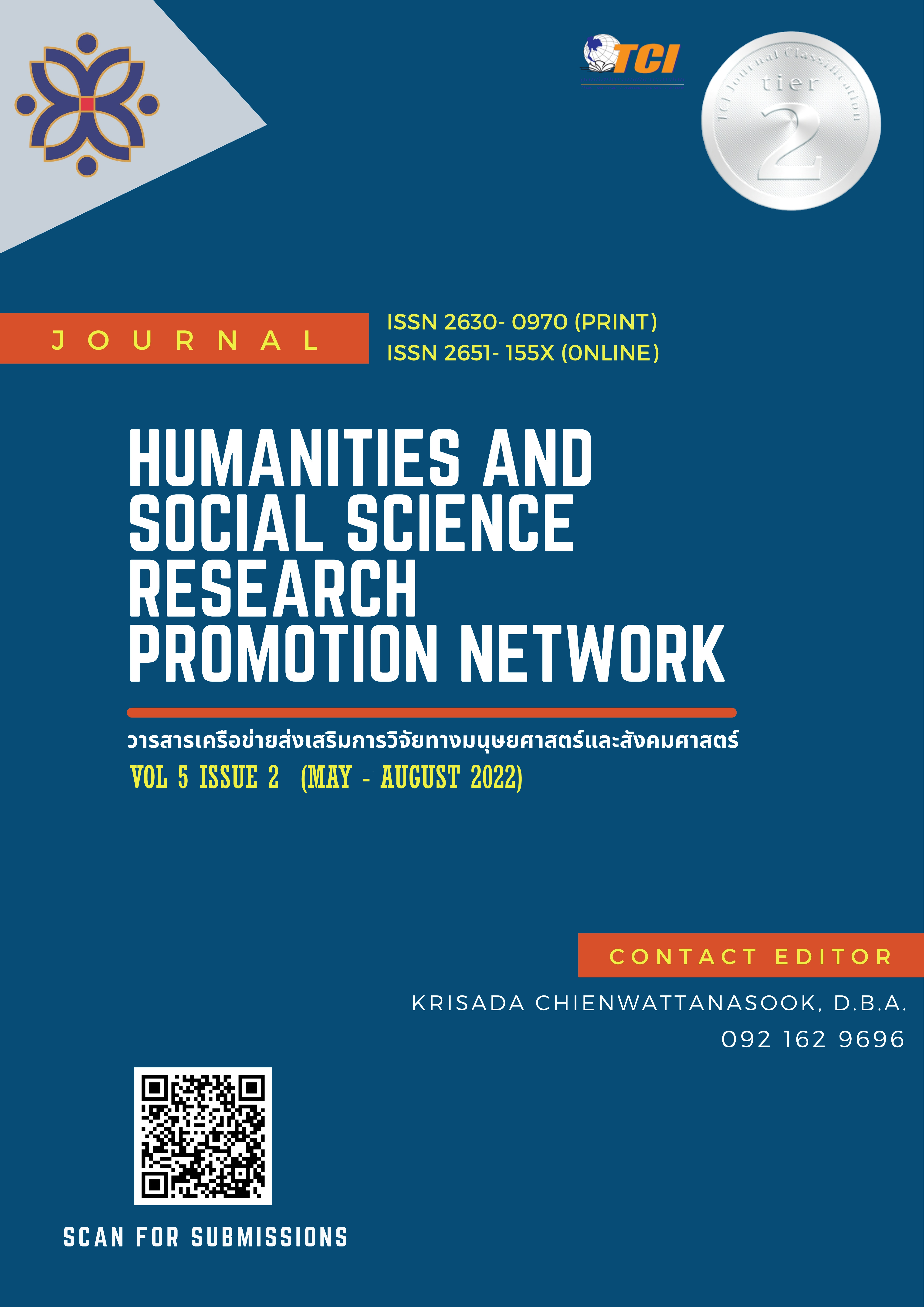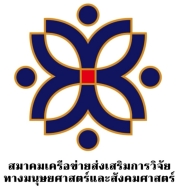AN ANALYSIS OF THE FACTORS MOTIVATING TOURIST TRAVEL TO PATTAYA CITY, CHONBURI PROVIENCE, UNDER THE COVID 2019 PANDEMIC (COVID-19)
Keywords:
Tourism Motivating Factors, Consumer Decision-Making, Tourism Marketing, COVID-19Abstract
The purpose of this research study was to analyze the motivating factors used in the decision to travel to Pattaya, Chonburi under the circumstances of the Coronavirus disease outbreak 2019. The population in this research were Thai and foreign tourists visiting the Pattaya area. Chonburi Province during the Coronavirus Disease 2019 Outbreak. The Sample size of the study was 400 units from questionnaires collected during the month. January-December 2021. The analysis used descriptive statistics and factor analysis. The results showed that motivating factors in tourism decision-making were analyzed into 4 factors: factor 1, tourism and related activities; factor 2, psychological factor; factor 3, resources of tourist attractions; and factor 4, promotion of tourism attraction marketing. With the weight of each variable in each factor greater than .6, the AVE value for each factor ranges from .411–.449, and the composite reliability (CR) value ranges from .674 – .833, while KMO is .876, which is at the level of significance. The results of this study suggest that Pattaya City administrators should promote the resource factors of tourist attractions and the factors of tourism attraction marketing. Because the value is less than .8 according to the assessment of tourists.
References
กองเศรษฐกิจการท่องเที่ยวและกีฬา กระทรวงการท่องเที่ยวและกีฬา. (2565). สถิติด้านการท่องเที่ยว ปี 2564. สืบค้นจาก https://mots.go.th/more_news_new.php?cid=628.
ประชาชาติธุรกิจออนไลน์. (2563). “พัทยา” มั่นใจท่องเที่ยวฟื้นเร็ว อัดแคมเปญปลุกคนไทยเที่ยวทั้งปี. สืบค้นจาก https://www.prachachat.net/tourism/news-515486.
ปิยะพร ธรรมชาติ และ สวัสดิ์ วรรณรัตน์. (2562). อิทธิพลของการบอกต่อผ่านอินเทอร์เน็ต (eWOM) และแรงจูงใจในการ ท่องเที่ยวต่อทัศนคติการเดินทางของนักท่องเที่ยวสูงอายุไทย. วารสารสมาคมนักวิจัย, 25(1), 107-127.
สิริญญา ชาติเผือก และ บุญญรัตน์ สัมพันธ์วัฒนชัย. (2562). ปัจจัยที่ส่งผลต่อการตัดสินใจเลือกสถานที่ท่องเที่ยวของนักท่องเที่ยวชาวไทยต่ออุทยาน แห่งชาติเขาใหญ่ จังหวัดนครราชสีมา และอุทยานแห่งชาติดอยอินทนนท์ จังหวัดเชียงใหม่. วารสารวิทยาลัยดุสิตธานี, 13(2), 134-153.
สำนักงานสภาพัฒนาเศรษฐกิจและสังคมแห่งชาติ. (2565). แผนพัฒนาเศรษฐกิจและสังคมแห่งชาติฉบับที่ 12 สำนักงานคณะกรรมการแผนพัฒนาเศรษฐกิจและสังคมแห่งชาติ. สืบค้นจาก https://www.nesdc.go.th/main.php?filename=develop
Aldebi, H., & Aljboory, N. (2018). The Impact of the Tourism Promotion-Mix Elements on the Foreign Tourists’ Mental Images of the Jordanian Tourist Destinations (A Field Study). International Business Research, 1(11), 74-86.
Amara, D. F. (2018). Motivation to Travel as A Result of Work Stress and Life Routine: The Case of Egyptian Vacationers. Journal of the Faculty of Tourism and Hotels; Alexandria University, 15(1), 1-8.
Boonkaew, S., Aujirapongpan, S., Kaewpresert Rakangthong, N., Potiya, N., & Jutidharabongse, J. (2021). The Tourist Motivation and Behavior of International Backpackers Attending the Full Moon Party in Thailand. The Journal of Asian Finance, Economics and Business, 8(6), 1067-1077.
Fodness, D. (1994). Measuring Tourist Motivation. Annals of Tourism Research, 21(3), 555-581.
Fornell, C. G., & Bookstein, F. L. (1982). Two structural equation models: LISREL and PLS applied to consumer exit-voice theory. Journal of Marketing Research, 19(4), 440-452.
Hair, J. F., Ringle, C. M., & Sarstedt, M. (2011). PLS-SEM: Indeed a silver bullet. Journal of Marketing Theory and Practice, 19(2), 139–151.
Haque, M. F., Haque, M. A., & Islam, M. (2014). Motivational Theories – A Critical Analysis. ASA University Review, 8(1), 61-68.
Kotler, P., & Keller, K. L. (2016). Marketing management. Global edition (15th ed.). Harlow, UK: Pearson Education.
Loredana, D. & Gabriel, D. (2018). Customer Satisfaction Survey to Tourist Destination Baile Herculane. Ovidius University Annals, Economic Sciences Series, 18(2), 417-421.
Maslow, A. H. (1943). A theory of Human Motivation. Psychological Review, 50(4), 370-396.
Maslow, A. H. (1954). Motivation and Personality. Wesley Longman Inc. New York, NY: Harper & Row, 62-68.
Mehmetoglu, M., & Normann, Ø. (2013). The link between travel motives and activities in nature-based tourism. Emerald Group Publishing Limited, 68(2), 3-13.
Solomon, M. R. (2020). Consumer Behavior: Buying Having and Being. Global Edition (13 edition), Engle-wood Cliffs. NJ. Prentice-Hall.
Tohidi, H., & Jabbari, M. M. (2018). The Effect of Motivation in Education. Procedia - Social and Behavioral Sciences, 31(1), 820 – 824.
Tohidi, H. (2011). Human Resources Management main role in Information Technology project management. Procedia-Computer Science Journal, 3(1), 925-929.
Yoon, Y., & Uysal, M. (2005). An examination of the effects of motivation and satisfaction on destination loyalty: a structural mode. Tourism Management, 26(1), 45–56.
Downloads
Published
How to Cite
Issue
Section
License
Copyright (c) 2022 ดลยา จาตุรงคกุล

This work is licensed under a Creative Commons Attribution-NonCommercial-NoDerivatives 4.0 International License.
บทความที่ได้รับการตีพิมพ์เป็นลิขสิทธิ์ของ ผู้เขียน
ทัศนะและความคิดเห็นที่ปรากฏในบทความในวารสารเครือข่ายส่งเสริมการวิจัยทางมนุษยศาสตร์และสังคมศาสตร์จะถือเป็นความรับผิดชอบของผู้เขียนบทความนั้น และไม่ถือเป็นทัศนะและความรับผิดชอบของกองบรรณาธิการ







